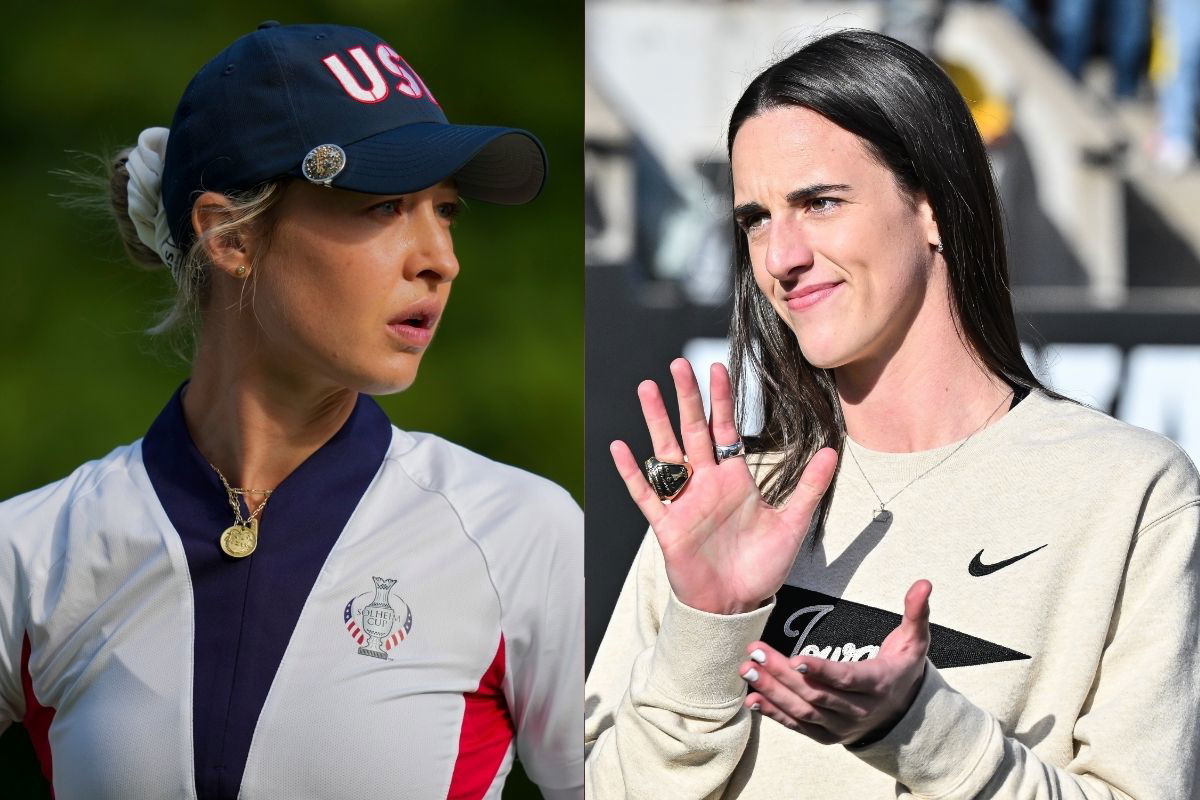

Just five years ago, the WNBA struggled with declining viewership, empty arenas, and questions about its long-term viability. The league averaged just 230,000 television viewers per game. Critics questioned whether professional women’s basketball could survive. Fast forward to 2025, and the league has shattered attendance records with 2.5 million fans. Television viewership has soared to 794,000 viewers per game. The WNBA generated over $1 billion in revenue this year alone. The catalyst? Transcendent stars like Caitlin Clark, Angel Reese, and Paige Bueckers.
Watch What’s Trending Now!
They didn’t just play exceptional basketball; they also demonstrated extraordinary leadership. They became cultural phenomena. Meanwhile, the LPGA Tour watched from the sidelines despite having world-class talent and record prize money. The contrast reveals a harsh truth: exceptional athletes don’t automatically translate to mainstream success without the proper organizational support and transcendent star power.
Top Stories
Scottie Scheffler Delivers Bad News to Tiger Woods After Sparking TGL Rumors

Tiger Woods’ GF Receives Emotional Message from Daughter Kai Trump After Turning 48

Unexpected Tiger Woods Payout Surfaces in Recently Released PGA Tour Filing

Masters Champion Secures Future With LIV Golf Amid Brooks Koepka Exit Rumors

Wishes Pour In From Phil Mickelson and Fans as Akshay Bhatia Ties Knot With Presleigh Schultz

ADVERTISEMENT
Why the LPGA desperately needs a Caitlin Clark-type transcendent star
Recent analysis shows the WNBA witnessed 5% growth among women’s sports fans in the U.S., jumping from 58% in 2024 to 63% in 2025. The LPGA remained completely stagnant at 18% in both years. Even more telling, women’s tennis commands a 33% share of fandom among women’s sports fans compared to men’s tennis at just 13%. Golf shows the opposite trend, with the LPGA holding an 18% share versus men’s golf at 21%.
These statistics expose the LPGA’s fundamental problem. While other women’s sports surge ahead, golf continues to lag behind its male counterpart. The tour possesses exceptional global talent from 29 countries and historic prize money increases to $131 million in 2025. Yet execution failures in leadership, sponsorship retention, and media strategy continue limiting growth.
Clark’s appearance at The Annika pro-am in November 2024 demonstrated exactly what transcendent star power looks like. Her presence drew crowds larger than most final-round tournament groups. Security officials struggled to manage the “crushing support” as fans swarmed for autographs.
ADVERTISEMENT
View this post on Instagram
Golf Channel moved its studio show 90 minutes earlier to broadcast Clark’s round live. Ticket sales jumped 1,200% compared to previous years. Current LPGA player Maria Fassi chased Clark down the 18th fairway, not just for a photo but to say thank you for supporting women’s sports.
ADVERTISEMENT
Industry legends haven’t held back their criticism of the tour’s missed opportunities. Stacy Lewis placed significant responsibility on current World No. 2 Nelly Korda to elevate the tour’s profile. “I think Nelly does have a responsibility. She needs to be in here talking about it and how good she’s playing. Give the media a couple hours every week. That’s what she’s going to have to start doing.”
LPGA legend Dottie Pepper delivered even harsher criticism of current players’ approach to sponsorship demands. Pepper emphasized that players need to “earn it” themselves instead of demanding better coverage and bigger sponsorship deals. “They earned it every day,” she said, referring to LPGA founders who built the tour from nothing.
The defensive reactions reveal the tour’s resistance to change. When asked about needing a Caitlin Clark-type star, Megan Khang responded: “It’s hard because obviously we play an individual sport… there are so many hidden Caitlin Clarks that the fans don’t know about.” This response highlights the fundamental disconnect between recognizing the problem and accepting solutions.
ADVERTISEMENT
How emerging talent and internal roadblocks shape the tour’s future
Despite the missed opportunities, the LPGA’s future may rest with rising stars like Lottie Woad, whose breakthrough performances demonstrate the potential for golf’s next transcendent figure. The 21-year-old English golfer won the Augusta National Women’s Amateur in 2024 and reached World Amateur Golf Ranking No. 1.
Woad made history by becoming the first amateur to win on the Ladies European Tour in three years. Then she turned professional and won the ISPS Handa Women’s Scottish Open in her debut week, earning $300,000 and becoming only the third player in LPGA history to accomplish this feat. Former teammate Charlotte Heath observed, “I think you work hard; she works 10 times harder.”
ADVERTISEMENT

Imago
EVIAN-LES-BAINS, FRANCE – 13.07.2025: Lottie Woad ENG of The Amundi Evian Championship at the Evian Resort Golf Club on July 13, 2025 in Evian-les-Bains, France.
credit: Andre Engelmann via Imago
The LPGA’s Elite Amateur Pathway program has identified other potential future stars. Kiara Romero currently has 13 points toward the required 20 for LPGA status. Anna Davis, the 2022 winner of the Augusta National Women’s Amateur, sits at 9 points. Stanford senior Megha Ganne brings 6 points as a U.S. Women’s Amateur winner.
However, the tour’s organizational obstacles continue hindering star development. The leadership crisis became evident when Commissioner Mollie Marcoux Samaan stepped down in January 2025, three years prior to the expiration of her contract. Despite overseeing a 90% increase in prize money, she faced criticism for poor handling of multiple issues.
ADVERTISEMENT
Sponsorship troubles compound the problem. Cognizant ended its title sponsorship of the Founders Cup after just three years. Ford signed only a one-year deal with ongoing uncertainty about 2025 involvement. The Portland Classic, the tour’s longest-running non-major tournament, lacks a title sponsor for the second consecutive year.
Media relations problems persist, with players reportedly difficult to work with regarding mid-round interviews and walk-and-talks. These systemic issues create an environment where even exceptional talents struggle to achieve mainstream breakthrough.
The blueprint for success exists in the WNBA’s transformation. That league converted declining viewership and empty arenas into record attendance and billion-dollar revenue streams through strategic star development and cultural engagement. The LPGA possesses comparable talent and increasing financial investment, but continues to lose sponsors and fails to convert exceptional individual performances into sustained organizational growth.
ADVERTISEMENT
The women’s sports boom created an unprecedented opportunity that the LPGA missed. While the WNBA seized the moment with transcendent stars who became cultural icons, women’s golf remained fragmented in its approach. Now, with emerging talents like Woad showing breakthrough potential, the tour faces a critical decision: address the systemic issues preventing star development or watch another generation of exceptional athletes fail to achieve the mainstream recognition they deserve.
The path forward requires both nurturing emerging talent and confronting the organizational obstacles that continue to limit growth. Without a transcendent star and the supporting infrastructure to elevate them, the LPGA risks remaining on the sidelines while other women’s sports continue their historic rise.
ADVERTISEMENT
ADVERTISEMENT
ADVERTISEMENT

